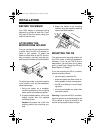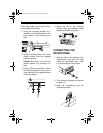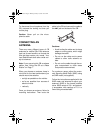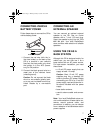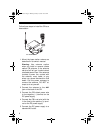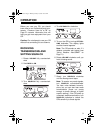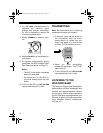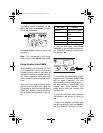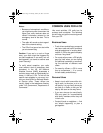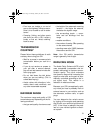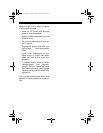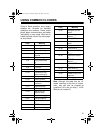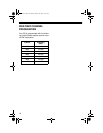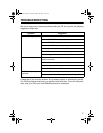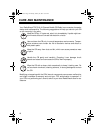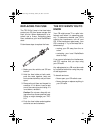
12
Notes:
• Because of atmospheric conditions,
you might encounter times when the
signal your radio receives does not
contain information relevant to the
emergency level of the alert. This is
normal.
• The radio will sound an alert regard-
less of the channel setting.
• The CB will not sound an alert while
you are transmitting.
Caution:
If you are in a rural or fringe
area, your radio might be triggered by
an alert broadcast in one area, but not
be triggered if you travel to another area
(even close by).
To verify actual reception, your radio
must receive a test or emergency alert
broadcast. In the US, the National
Weather Service (NWS) broadcasts a
test alert every week on Wednesday be-
tween 11 AM and 1 PM. To find out the
specific test schedule in your area, con-
tact your local NOAA or National Weath-
er Service office. These offices are
usually listed in the telephone directory
under “US Government, Department of
Commerce.”
COMMON USES FOR A CB
Like most activities, CB radio has its
customs and courtesies. The following
tips will help you get the most enjoyment
from your CB.
Business Uses
• Truck drivers and delivery personnel
can learn road and traffic conditions
and get assistance in locating desti-
nations. A CB is also good company
on those “long hauls.”
• On construction crews, a CB quickly
pays for itself when you are calling
for additional materials or coordinat-
ing the activities of different work
crews.
• For security officers, a CB is more
than a convenience — it is a must
for both safety and efficiency.
Personal Uses
• Keep in touch with home while driv-
ing to work, to the store, or to a so-
cial activity. Let your family know you
are tied up in traffic or that you will
stop by the store on the way home.
• If you are a two-car (or more) family,
CBs are great for communicating
with family members while they are
in their cars.
• Contact friends or neighbors — find
out “what’s happening” or plan a
get-together.
21-1709.fm Page 12 Monday, January 29, 2001 10:29 AM



